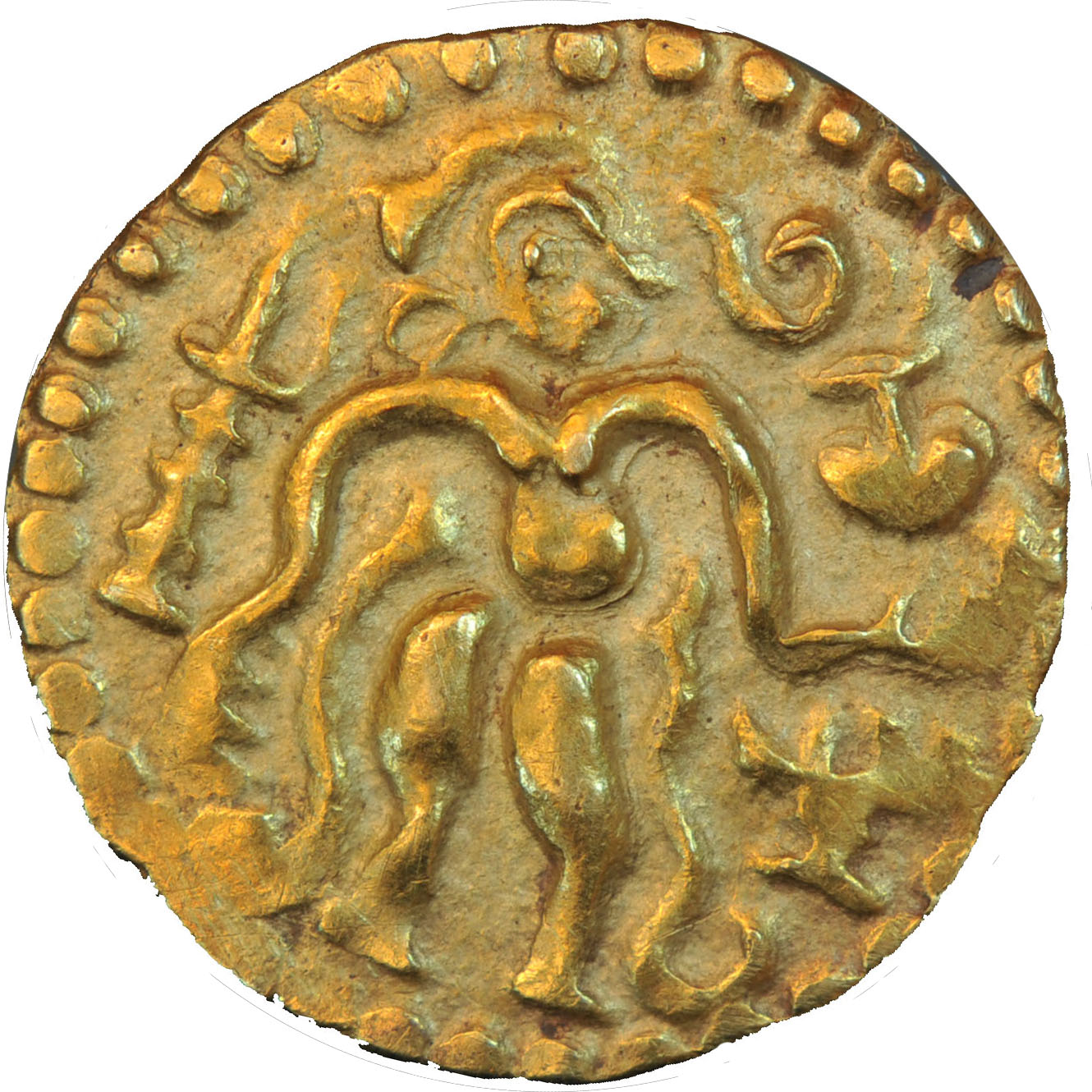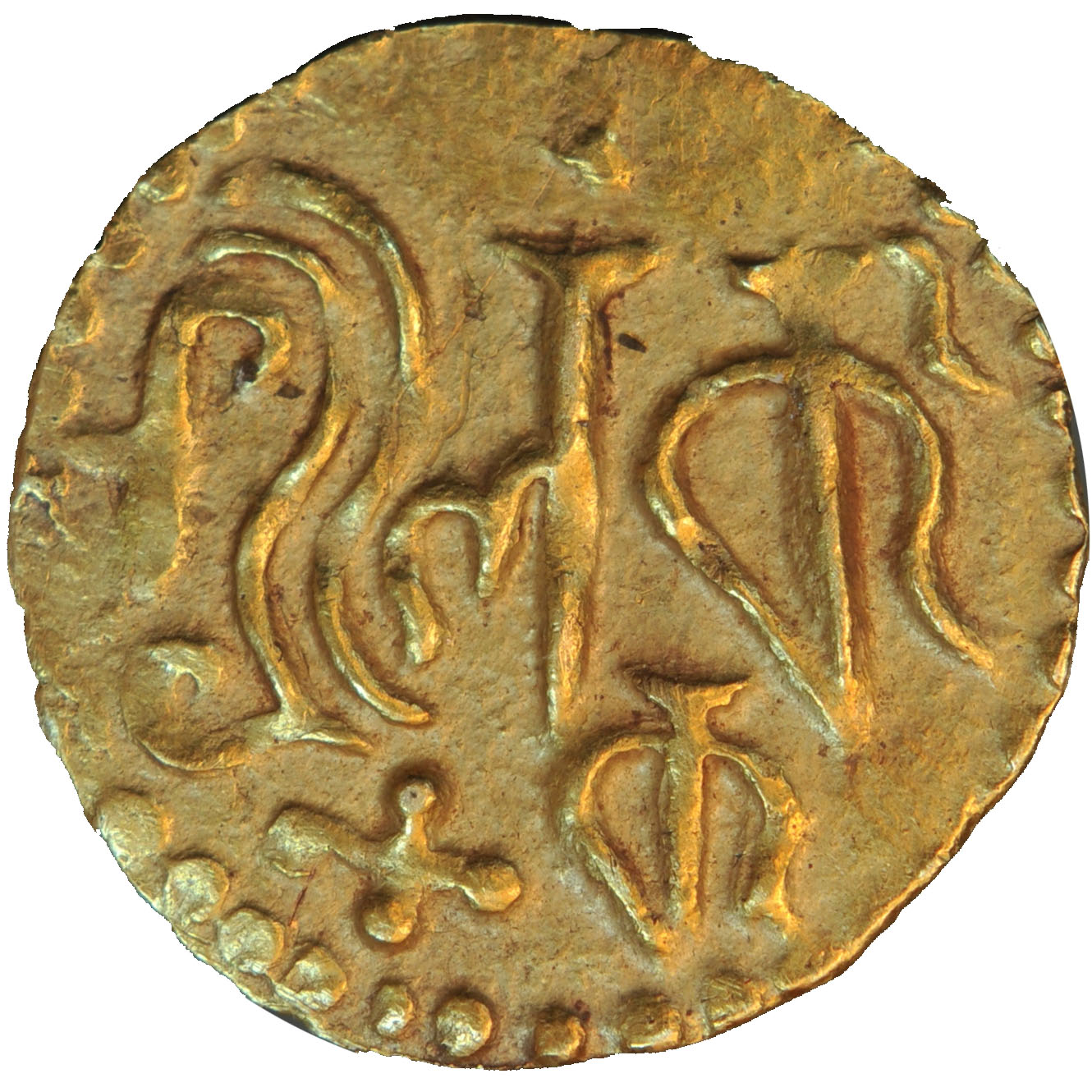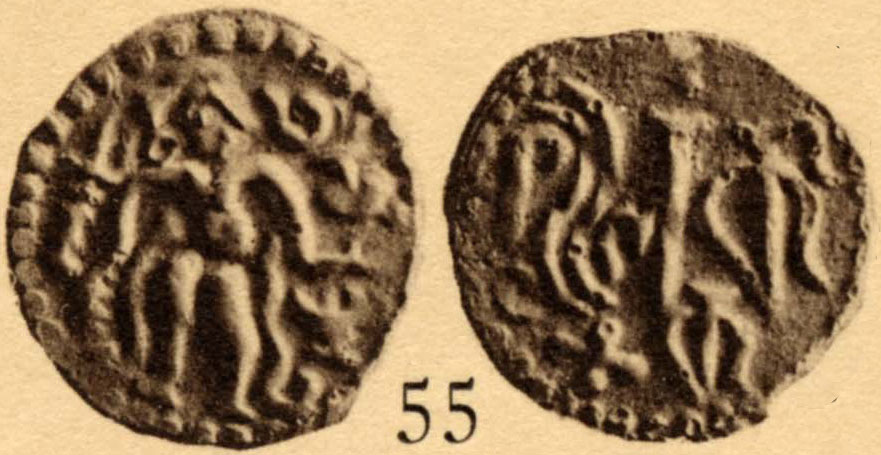



| 
|

| |
| Codrington #55 | |
The Ada Kahavanu at Colombo National Museum coin had been digitally
photographed before it was
stolen on 2012 March 19th.
I compared that with the image of the same Coin from Codrington 1924
edition scanned at 300 dpi. It looked different because of what looked
like caste bubles.
On 2012 May 31st, I emailed for expert opinon.
Jan Lingen replied
At the time of Codrington is was quite normal to use plaster casts
for illustration. That way you get much better illustrations, which
are not affected by discoloration of the original coin and all
illustration have about the same tone. It was also a safety precaution
as one didn't need to bring the originals to the photographer, but the
worthless plaster casts.
What I see that the picture in the catalogue is clearly a plaster cast
and not a cast coin and that the pre-robbery image is one and the same
coin. They sometimes say:, "Fortunately we have still the pictures"
but I am afraid that because the coin is of gold, the burglars may
have melted it.
Prof. Osmund.Bopearachchi replied
It is very difficult to make a judgement on the coin. Codrington's
black and white photographs were made of the plaster casts, like we
all of us used to do before the introduction of the digital technique.
This is the reason why there air bubbles on Codrington's photographs.
The gold coin looks okay to me. Yet one has to be very careful.
If you look at my first book, the photographs are made over the casts
that I have made of each coin. If you are not very careful air bubbles
will stay. This was a very old method to avoid shades and to have
perfect balance regardless of the colour of the patina. Today I only
make digital photographs like all of us.
I never knew about this plaster cast method of coin illustration and it explained the differences I had spotted. So the plates in Codrington are not that useful for any detailed study.
Text edited from